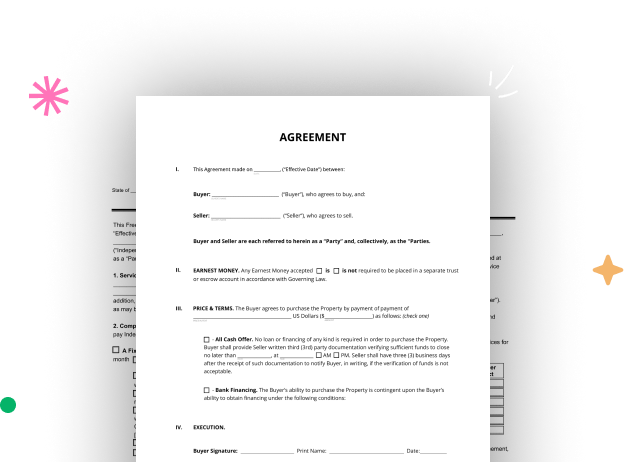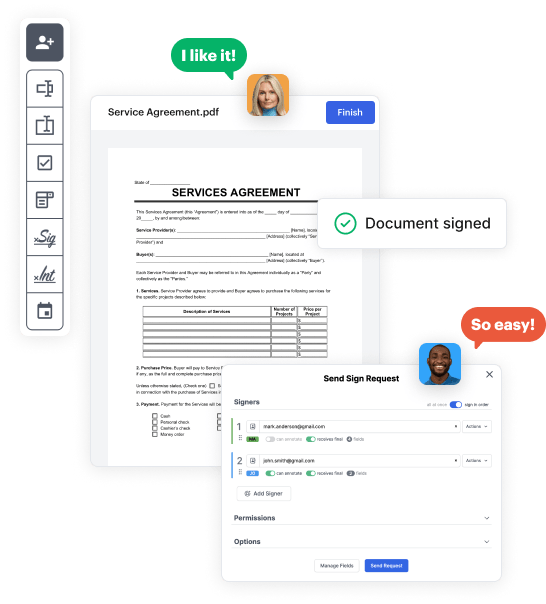

First, sign in to your DocHub account. If you don't have one, you can easily sign up for free.
Once signed in, head to your dashboard. This is your central hub for all document-focused tasks.
In your dashboard, choose New Document in the upper left corner. Choose Create Blank Document to craft the Real Estate Trust from the ground up.
Add numerous elements like text boxes, images, signature fields, and other fields to your form and designate these fields to certain recipients as needed.
Refine your template by including instructions or any other crucial tips utilizing the text feature.
Thoroughly review your created Real Estate Trust for any mistakes or required adjustments. Leverage DocHub's editing features to perfect your document.
After completing, save your file. You may select to keep it within DocHub, transfer it to various storage solutions, or send it via a link or email.